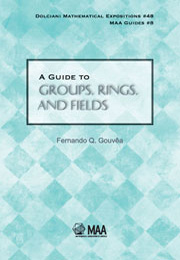3 - Algebraic Structures
Summary
An operation (more precisely, a binary operation) on a set S is a function from S × S to S. Standard examples are addition, multiplication, and composition of functions.
Elementary texts often emphasize the “closure” property of an operation (or, sometimes, of an algebraic structure): the product of two elements in S must be an element of S. We have, instead, built this into the definition.
An algebraic structure (Bourbaki says a magma) is a set equipped with one or more operations. Such structures sometimes come with distinguished elements (such as identity elements) or functions associated with the operation (such as taking inverses).
An algebraic structure is said to be finite if the underlying set S is finite. We will write |S| for the number of elements of S, which is often referred to as the order of S.
For each kind of algebraic structure there is a corresponding choice of “good functions” from one object to another, usually those that preserve the structure. These are usually called homomorphisms.
Attempts have been made to produce a general theory of algebraic structures, for example in “universal algebra.” Some good references are [43, ch. 2] and [29].
STRUCTURES WITH ONE OPERATION
Suppose we have a set S with one operation,which we will denote by juxtaposition, (a, b) ↦ ab, and call the “product of a and b” unless there is risk of confusion.
- Type
- Chapter
- Information
- A Guide to Groups, Rings, and Fields , pp. 17 - 28Publisher: Mathematical Association of AmericaPrint publication year: 2012



